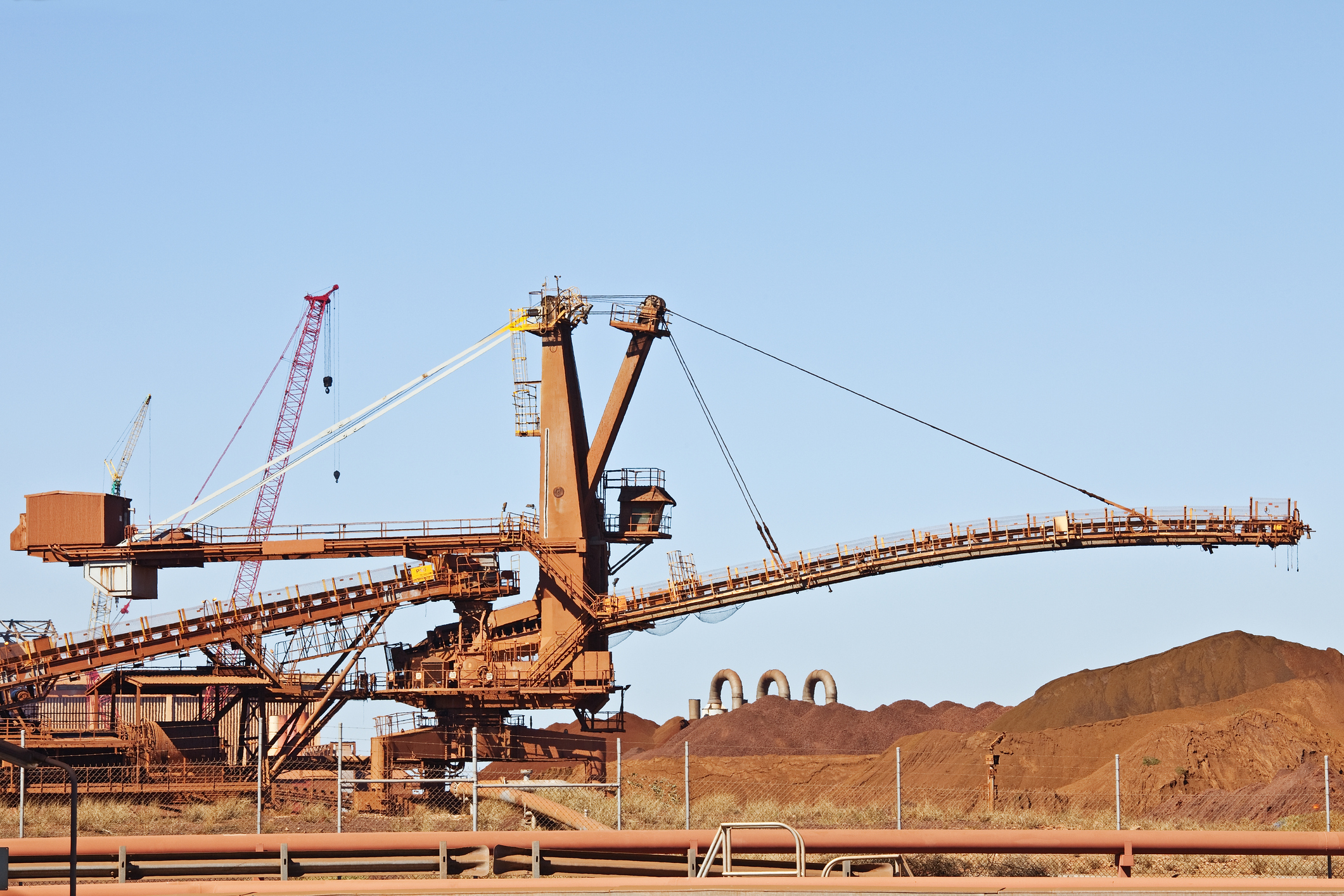BHP results: On track to hit iron ore target, knocks down met coal ahead of unification vote and WA border opening

Pic: John W. Banagan/Stone via Getty Images.
Solid results for BHP (ASX:BHP) today, where The Big Australian confirmed it was on track to meet the upper end of guidance at its iron ore mines in the Pilbara but reduced expectations for its met coal operations in Queensland.
BHP produced 144.4Mt of iron ore from its WAIO division in the December half, including a 5% increase in production to 73.9Mt in the December quarter after production was hit by a train driver shortage in the September quarter.
That puts it in front of its 2021-22 target of 278-288Mt.
On BHP’s share of production alone, the mining major produced 127.3Mt, including 65.1Mt in the December quarter, against guidance of 246-255Mt.
It raked in US$113.54/wmt FOB in the December half, up 9% on the same period in 2020 despite a late year price collapse caused by falling Chinese steel production.
At its met coal mines, a big drop in production in the September quarter was followed by flat export volumes in December due to maintenance and heavy rainfall in Queensland. Australian premium hard coking coal has been at or near record highs of over US$400/t in recent weeks owing to strong demand and supply disruptions.
BHP saw an 8% drop in first half exports to 17.7Mt, dropping guidance from 39-44Mt for FY22 to 38-41Mt (from 70-78Mt to 68-72Mt on a 100% basis).
However, that will likely be offset in its financials by super high prices, with BHP’s haul for each tonne of hard coking coal soaring 135% from US$118.54/t in the June half of 2021 to US$278.60/t in the December half. Weak coking coal was fetching US$218.65/t against US$118.54/t in the prior period.
Thermal coal, which BHP is trying to sell out of, and nickel also saw big price jumps, by 94% to US$137.68/t for energy coal and 12% to US$19,651/t for nickel. BHP’s copper prices were near historic highs at US$4.31/lb.
The bigger moment for BHP this week will be the vote to unify its corporate structure tomorrow under the Australian BHP Group banner, absorbing its British entity to create a $220 billion ASX-listed company.
The solid results came as Bloomberg reported BHP wants to use its financial muscle to return to major M&A.
It is reportedly eyeing major deals in base metals after pivoting from oil, gas and coal to energy transition commodities like nickel and copper, potentially including the multi-billion dollar takeovers of Glencore, Freeport and Vale’s base metals businesses.
BHP shares were down 0.3% in early trade, with 62% iron ore changing hands at US$127.65/t according to Fastmarkets MB.
BHP share price today:
BHP results: defying inflationary pressure
After complaining of impacts from Covid, borders and supply chains last quarter, BHP boss Mike Henry said cost control remained strong as it achieved “near record” production in its WAIO division.
“Our continuing focus on people and on operational reliability enabled us to achieve near record production in iron ore and to reduce the impacts of adverse weather and COVID-19 related labour constraints in our operations,” he said.
“Cost control remained strong across the business, in the face of a more inflationary environment.
“Unit cost guidance remains intact bar a change to metallurgical coal which is a function of the lowering of production guidance as a result of significant wet weather and in anticipation of Omicron headwinds in the early part of the second half of the financial year.”
BHP is bracing for some disruptions from widespread Covid outbreaks in WA that could arise when it opens its borders after highlighting them as one of the reasons for issues at its coking coal mines in Queensland, where workforce absenteeism is expected to continue into the second half of the financial year.
“The proposed easing of Western Australia’s border restrictions on 5 February 2022 may introduce some short-term disruption to the operating environment as the COVID-19 pandemic evolves in the state,” BHP noted.
Henry is eyeing steady performances from its WAIO, Nickel West and Olympic Dam mines after completing major maintenance programs in the December half and sold the first 400,000t of nickel sulphate from its new plant in Kwinana in the December quarter, central to its supply deal with Elon Musk’s Tesla.
BHP also says the three year ramp up of its new South Flank mine, which at its full 80Mtpa production rate will be the largest producer of lump iron ore in the world, is going to plan. The mine hit a 45Mtpa rate in the December half and will continue to ramp up as an automation program is rolled out over the next 18 months.
Copper production takes a hit
Some of BHP’s biggest issues came at its copper assets, where the miner saw production slide 3% to 365,500t in the December quarter.
Its December half production of 742,000t was 12% lower than the same period in 2020.
As flagged by JV partner Rio Tinto (ASX:RIO) yesterday, production at Escondia fell 15 per cent to 488,000t due to declining feed grades, while recoveries at the Spence Growth project at the Pampa Norte mine have cause BHP to lower guidance.
It says copper will come in at the low end of its FY22 guidance of 1.59-1.76Mt.
Nickel guidance remains unchanged despite a 15% year on year drop in first half production to 39,300t of nickel metal.
RBC’s Kaan Peker said the impact of the result should be muted given iron ore sentiment will balance production downgrades elsewhere.
“BHP’s result is likely to drive modest consensus downgrades although weaker copper production from SGO may help pricing in what remains a very tight underlying market,” he said.
“The same could potentially be said for met coal. With iron ore driving so much of the cash flow, the impact from today’s result should be relatively muted considering the relative strength there will likely help to offset downgrades elsewhere.
“Focus is now likely to shift to the unification votes to be held on Thursday, which at this stage we expect will pass, but we also highlight there is a potential asymmetrical benefit from holding the Limited line vs. the plc line if the votes do not pass.”

UNLOCK INSIGHTS
Discover the untold stories of emerging ASX stocks.
Daily news and expert analysis, it's free to subscribe.
By proceeding, you confirm you understand that we handle personal information in accordance with our Privacy Policy.








